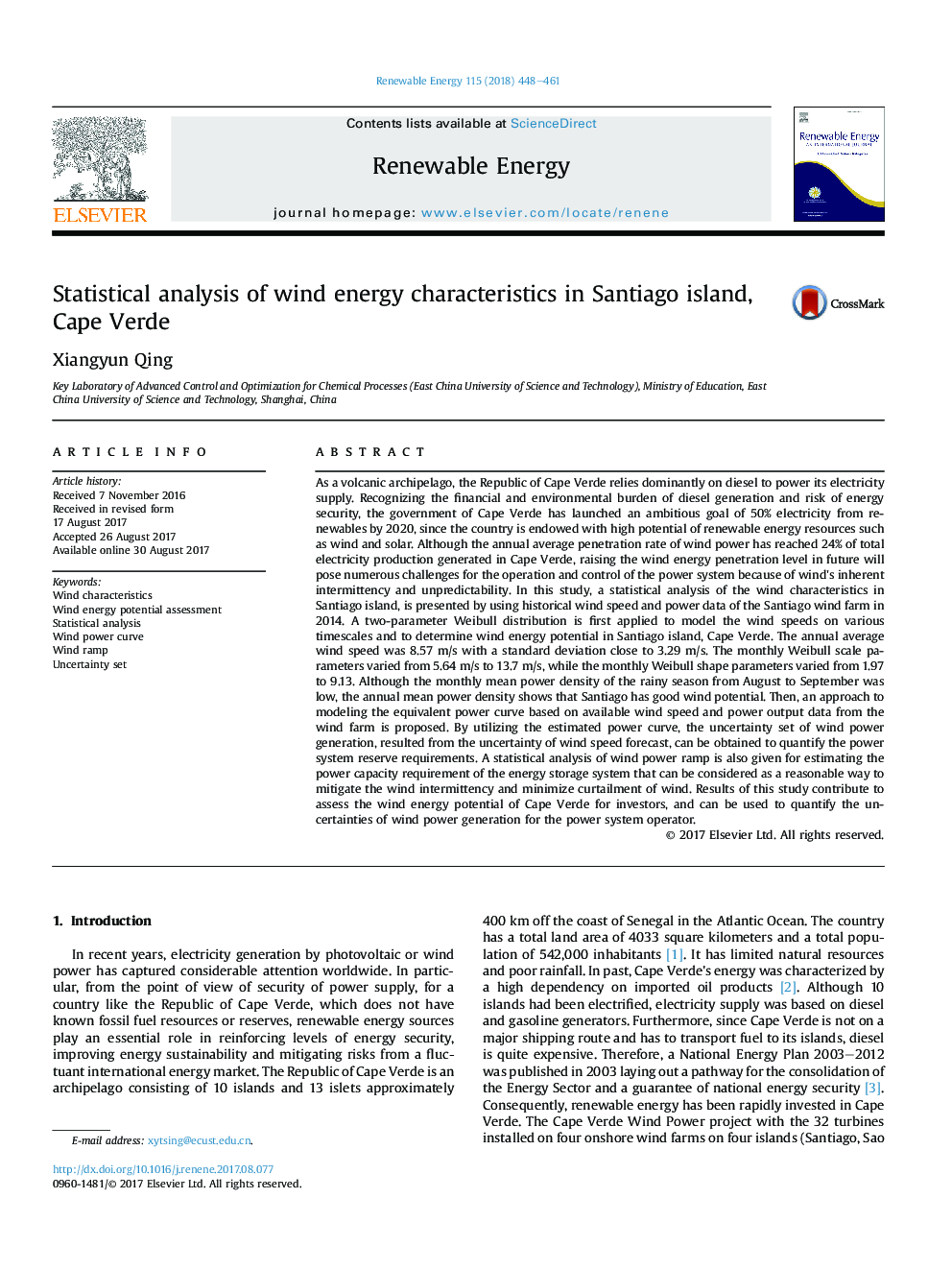| کد مقاله | کد نشریه | سال انتشار | مقاله انگلیسی | نسخه تمام متن |
|---|---|---|---|---|
| 6765238 | 1431590 | 2018 | 14 صفحه PDF | دانلود رایگان |
عنوان انگلیسی مقاله ISI
Statistical analysis of wind energy characteristics in Santiago island, Cape Verde
ترجمه فارسی عنوان
تجزیه و تحلیل آماری ویژگی های انرژی باد در جزیره سانتیاگو، کیپ ورد
دانلود مقاله + سفارش ترجمه
دانلود مقاله ISI انگلیسی
رایگان برای ایرانیان
کلمات کلیدی
خصوصیات باد، ارزیابی بالقوه انرژی باد، تحلیل آماری، منحنی قدرت باد، رمپ باد، عدم اطمینان،
موضوعات مرتبط
مهندسی و علوم پایه
مهندسی انرژی
انرژی های تجدید پذیر، توسعه پایدار و محیط زیست
چکیده انگلیسی
As a volcanic archipelago, the Republic of Cape Verde relies dominantly on diesel to power its electricity supply. Recognizing the financial and environmental burden of diesel generation and risk of energy security, the government of Cape Verde has launched an ambitious goal of 50% electricity from renewables by 2020, since the country is endowed with high potential of renewable energy resources such as wind and solar. Although the annual average penetration rate of wind power has reached 24% of total electricity production generated in Cape Verde, raising the wind energy penetration level in future will pose numerous challenges for the operation and control of the power system because of wind's inherent intermittency and unpredictability. In this study, a statistical analysis of the wind characteristics in Santiago island, is presented by using historical wind speed and power data of the Santiago wind farm in 2014. A two-parameter Weibull distribution is first applied to model the wind speeds on various timescales and to determine wind energy potential in Santiago island, Cape Verde. The annual average wind speed was 8.57Â m/s with a standard deviation close to 3.29Â m/s. The monthly Weibull scale parameters varied from 5.64Â m/s to 13.7Â m/s, while the monthly Weibull shape parameters varied from 1.97 to 9.13. Although the monthly mean power density of the rainy season from August to September was low, the annual mean power density shows that Santiago has good wind potential. Then, an approach to modeling the equivalent power curve based on available wind speed and power output data from the wind farm is proposed. By utilizing the estimated power curve, the uncertainty set of wind power generation, resulted from the uncertainty of wind speed forecast, can be obtained to quantify the power system reserve requirements. A statistical analysis of wind power ramp is also given for estimating the power capacity requirement of the energy storage system that can be considered as a reasonable way to mitigate the wind intermittency and minimize curtailment of wind. Results of this study contribute to assess the wind energy potential of Cape Verde for investors, and can be used to quantify the uncertainties of wind power generation for the power system operator.
ناشر
Database: Elsevier - ScienceDirect (ساینس دایرکت)
Journal: Renewable Energy - Volume 115, January 2018, Pages 448-461
Journal: Renewable Energy - Volume 115, January 2018, Pages 448-461
نویسندگان
Xiangyun Qing,
